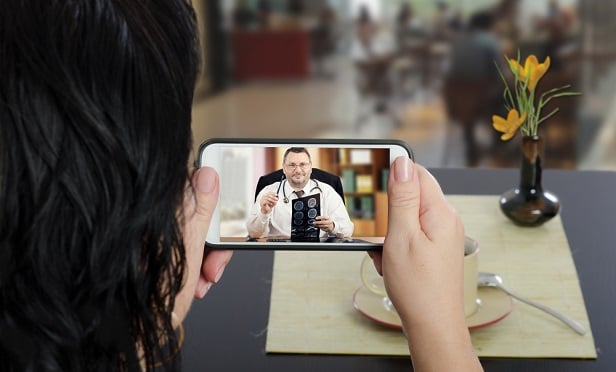 Who uses it and how they want it to serve them varies by age, with millennials seeking mental health care and older people using it for chronic health issues. (Photo: Shutterstock)
Who uses it and how they want it to serve them varies by age, with millennials seeking mental health care and older people using it for chronic health issues. (Photo: Shutterstock)
Telehealth is growing, with the majority of consumers amenable to using it. A key holdup? Even among those who do use it, a sizable percentage aren't sure that their health coverage will pay for it.
According to the Telehealth Index: 2019 Consumer Survey from American Well, 66 percent of consumers are willing to dive into the world of telehealth, and 8 percent have already "seen" a doctor that way. They like that it's fast, convenient, and cheaper than an in-person visit—but 17 percent of those willing to give it a shot aren't sure it's covered by their provider.
Related: 6 tips for changing the telemedicine conversation
Who uses it and how they want it to serve them varies by age, with millennials seeking mental health care and older people using it for chronic health issues and prescription renewals—although 88 percent of those 65 and older wouldn't switch their primary care provider to get a PCP who uses it. Those in the middle see it as a supplier of urgent care.
Consumers put off getting care for numerous reasons, the most predominant of which is that they "thought the problem would go away." But second and third, in that order for the 70 percent of people who have delayed getting health care are "takes too long to see [the] doctor" and "cost." The report says that if people were better acquainted with telehealth's capabilities and availability, that could cut down on delayed care.
Naturally enough, the young are the most likely to use telehealth, with 54 percent of users being millennials. And among telehealth users, 70 percent have children. Among those who said they were willing to try telehealth, just 20 percent said they were game to use it for a pediatrician for their kids—but it also referred to a Nemours Children's Health System survey that found 98 percent of parents who had used Nemours' telehealth program said it was equal to or better than an in-person visit.
Nearly half of telehealth users live in the South, which could be a way of getting around the difficulty of getting health care in rural settings, particularly for specialty care.
The big obstacle to telehealth use appears to be ignorance of the service, with just 20 percent of respondents in another survey saying they had even heard of it. And even though people now often go to urgent care centers rather than emergency rooms, they don't think of telehealth as a means of getting care in the middle of the night; 52 percent of consumers overall said they'd go to the emergency room. Only 18 percent of consumers opted for telehealth.
Read more:
© 2025 ALM Global, LLC, All Rights Reserved. Request academic re-use from www.copyright.com. All other uses, submit a request to [email protected]. For more information visit Asset & Logo Licensing.







